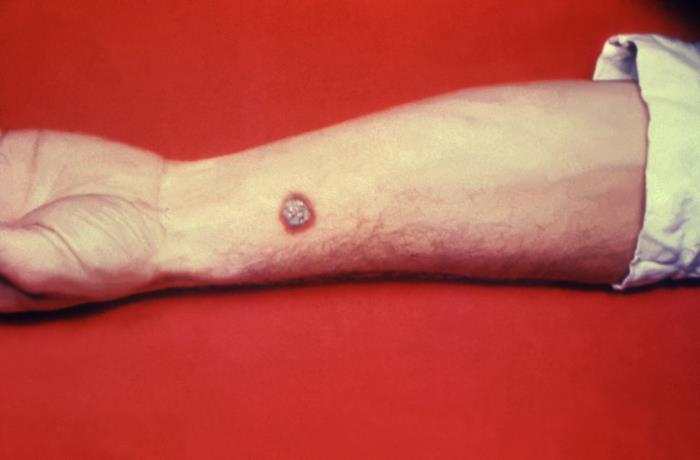At least 36 people in Zimbabwe’s Umzingwane district have sought treatment in local clinics for anthrax, according to Zimbabwe media last week. Nearly all the cases were classified as cutaneous anthrax. There are no reports of fatalities.

In addition, some 25 cattle have died from the bacterial disease, prompting fears of tainted meat being sold to butchers in Bulawayo, the country’s second most populous city.
According to Provincial veterinary officer Enat Mdlongwa, “We’ve received reports of 25 cattle that have died of anthrax in Umzingwane district and we’ve since put the area under quarantine. No cattle movement is allowed in and out of the area.”
Anthrax vaccines for the rest of the animals have been requested.
Anthrax is a bacterial pathogen in livestock and wild animals. Some of the more common herbivores are cattle, sheep,goats, horses, camels and deers. Anthrax is a very serious disease of livestock because it can potentially cause the rapid loss of a large number of animals in a very short time. Affected animals are often found dead with no illness detected.
It infects humans primarily through occupational or incidental exposure with infected animals of their skins.
When conditions become favorable, the spores germinate into colonies of bacteria. An example would be a grazing cow ingests spores that in the cow, germinate, grow spread andeventually kill the animal.Anthrax is caused by the bacterium, Bacillus anthracis. This spore forming bacteria can survivein the environment for years because of its ability to resist heat, cold, drying, etc. This is usually the infectious stage of anthrax.
LISTEN: Anthrax in animals: An interview with Dr. Buddy Faries
The bacteria will form spores in the carcass and then return to the soil to infect other animals. The vegetative form is rarely implicated in transmission. Strict enforcement of quarantines and proper burning and burying of carcasses from livestock suspected to have died from anthrax is important to prevent further soil contamination with the bacterial spores.
There are no reports of person-to-person transmission of anthrax. People get anthrax by handling contaminated animal or animal products, consuming undercooked meat of infected animals and more recently, intentional release of spores.
There are three types of human anthrax with differing degrees of seriousness: cutaneous, gastrointestinal and inhalation.
Cutaneous anthrax occurs when the spore (or possibly the bacterium) enters a cut or abrasion on the skin. It starts out as a raised bump that looks like an insect bite. It then develops into a blackened lesion called an eschar that may form a scab. Lymph glands in the area may swell plus edema may be present. This form of anthrax responds well to antibiotics. If untreated, deaths can occur if the infection goes systemic. 95% of cases of anthrax are cutaneous.
Robert Herriman is a microbiologist and the Editor-in-Chief of Outbreak News Today
Follow @bactiman63
Related:


2 thoughts on “Zimbabwe: Anthrax sickens dozens in Umzingwane district”